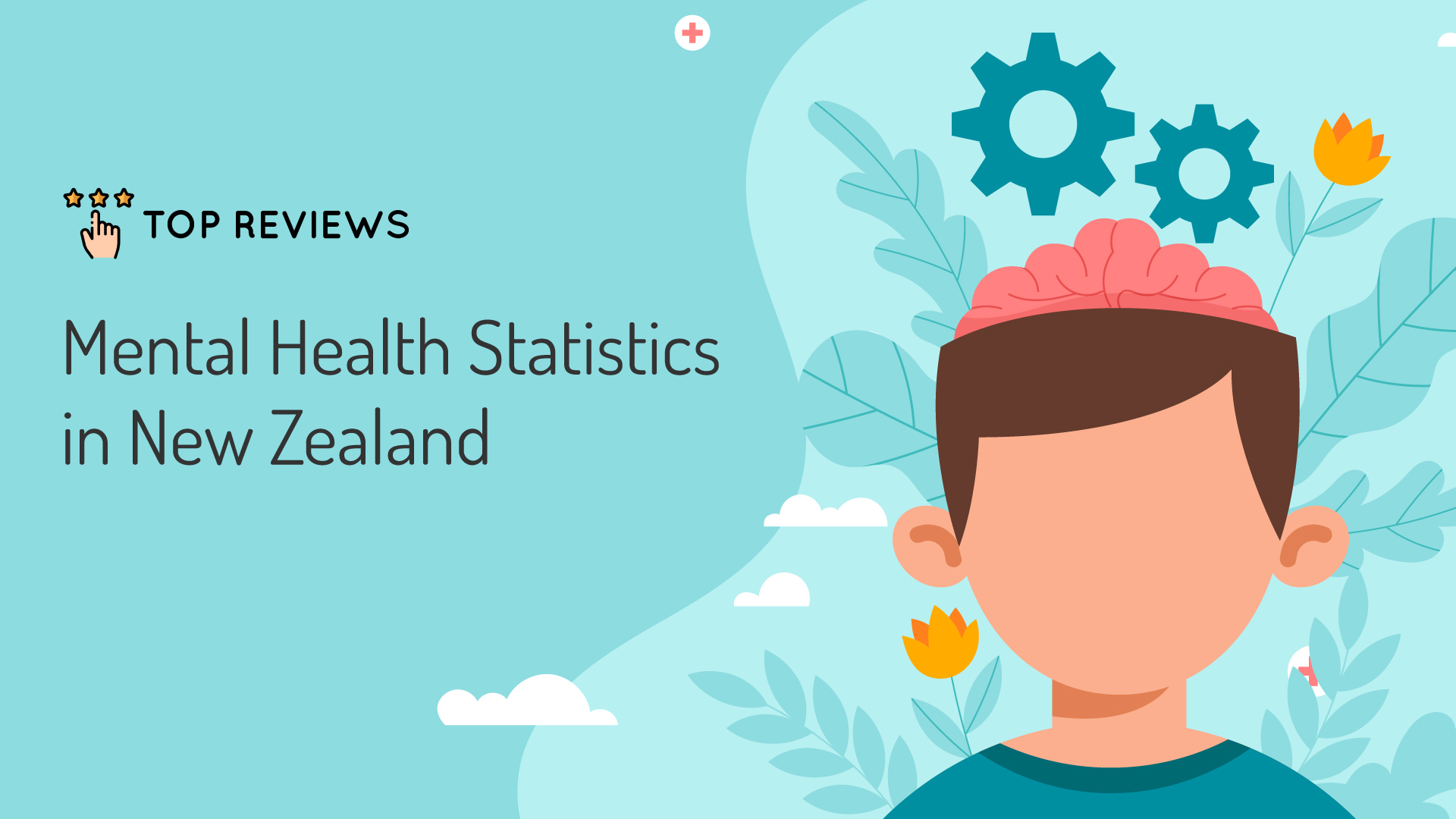Mental Health Statistics in New Zealand Before and During the Pandemic
Key Insights
- Despite the pandemic, there’s an overall high life satisfaction rating among NZers.
- New Zealand entered the top 10 in the list of happiest countries in 2012 and is still in the top 10 of the 2021 World Happiness Report.
- Between 2018 and 2019, New Zealand ranked the highest among Asia-Pacific countries in terms of happiness with a score of 7.28.
- Wellbeing statistics as of June 2020 show that most New Zealanders don’t consider themselves lonely.
- Older people aged 65 years and up in New Zealand are twice more likely than those aged 18 to 24 to find their lives worthwhile.
- In 2019, the NZ government announced an extra budget allocation of $1.9 billion for the mental health of Kiwis.
- Generally, New Zealanders have high trust in each other.
- A study by Site Safe in May 2019 reported masculine culture as a contributing factor to ongoing mental health issues in the country’s construction industry.
The World Happiness Report has consistently seen New Zealand on its top ten list of over a hundred countries since it started in 2012. The current report (2021) places it at the ninth spot.
Yet, despite the fact that New Zealand is in the top ten happiest countries, there is an underlying mental health issue in the country.
Among other things, suicide cases increased from 13.67 deaths per 100,00 people in 2017 – 2018 to 13.93 deaths per 100,000 people in 2018 – 2019, with a total of 685 self-inflicted deaths for those years.
Youth suicide in New Zealand is also one of the highest among OECD (Organisation for Economic Co-operation and Development) countries.
Perhaps due to this, the government took measures to safeguard the mental health of its citizens in 2015. Mental health in New Zealand is a component of its Health and Safety at Work Act of 2015. However, a wellbeing budget was only introduced by the government in the second quarter of 2019.
Pre-Pandemic Mental Health in New Zealand
A Newsroom New Zealand article published in June 2019 sheds light on how mental health in the workplace has become a cause of concern among Kiwis. In particular, industries that are considered male-dominated like agriculture and construction are the ones with alarming mental health statistics.
A 2016 report from the Suicide Mortality Committee revealed that 7% of male suicides (of working age) came from the construction and building sectors. It’s slightly higher than the 6.8% of suicides from the farming and forestry industries.
But on the flip side, the 2019 World Happiness Report by the United Nations Sustainable Development Solutions Network ranked New Zealand eighth (8th) for that year. The country’s news media website Stuff mentioned social support and resilience as some of the main factors New Zealand made it to the list.
Among Asia-Pacific countries, New Zealand ranked as the happiest country with a score of 7.28 between 2018 and 2019. It’s followed by Australia (7.18), Taiwan, (6.58), Singapore (6.38), Thailand (5.99), Japan (5.94), Philippines (5.88), South Korea (5.85), Mongolia (5.68), and Hong Kong (5.48).
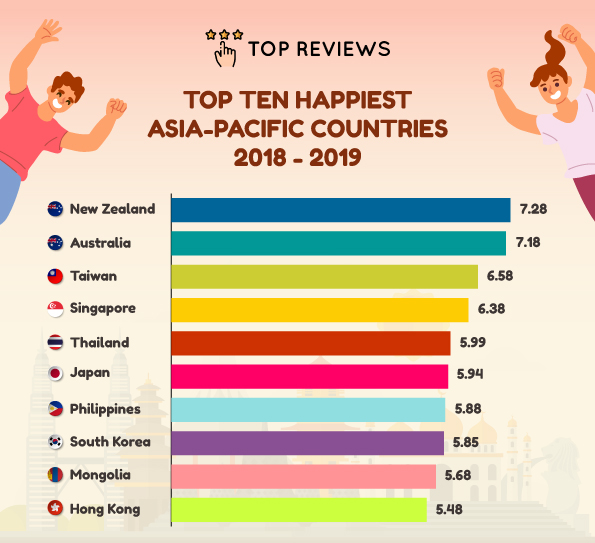
It was also in May 2019 when Prime Minister Jacinda Arden introduced what would be known as the world’s first wellbeing budget. The NZ government would go on to allocate an extra $1.9 billion over a period of five years for the mental health of all Kiwis.
As of writing, New Zealand’s wellbeing budget includes:
- A new $455 million frontline programme for mental health
- The goal is to reach 325,000 people by the year 2024
- $40 million support fund for suicide prevention services
- Re-establishing a Mental Health and Wellbeing Commission
- Strengthening existing mental health services.
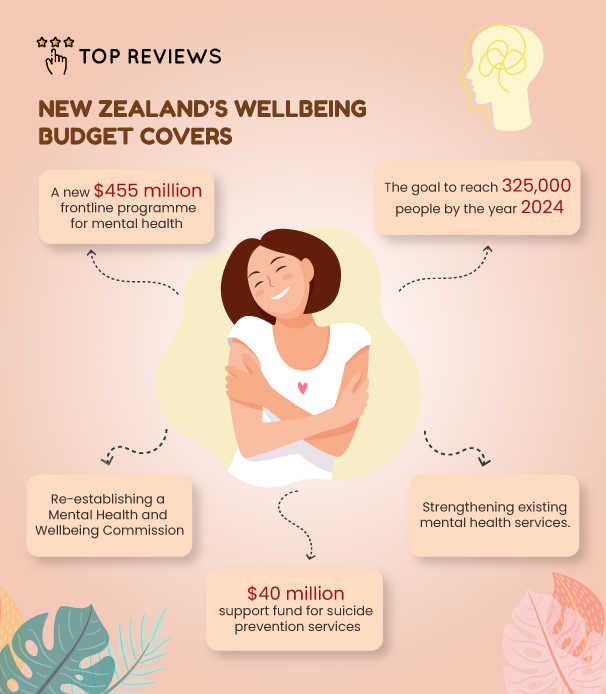
Suicide Statistics in New Zealand
As we noted earlier, suicide is an issue for Kiwis. A Newshub article reported that suicide rates in New Zealand have been steadily increasing over the last 12 years.
For a decade (1996 – 2016), the youth of New Zealand was consistently the life-stage group with a high suicide rate. It decreased by 35% from 25.9 per 100,000 in 1996, to 16.8 per 100,000 by 2016.
Youth suicide in New Zealand is one of the highest among OECD (Organisation for Economic Co-operation and Development) countries. In a 2019 report, its suicide rate was higher than the United Kingdom’s and Ireland’s.
In 2016, a rate of 11.3 per 100,000 people resulted in 554 suicide deaths in the country. Between 1996 and 2016, there was a significant 26% decrease in male suicides from 22.9 per 100,000 males to 17.0 per 100,000 males.
Between 2017 and 2018, the death by suicide rate reported by the Suicide Mortality Committee would increase to 668 people. For those years, the suicide death rate was 13.67 per 100,000 people.
By May 2019, Site Safe, a construction industry association in New Zealand launched its first investigation on suicide within its industry. Based on 300 coroner’s reports on construction worker suicides, it determined the following contributing factors:
- Long working hours
- Masculine culture (which we’ll explain more thoroughly below)
- Social isolation
- Substance abuse
- Relationship issues
- Mental health issues
- Job insecurity
- Transient working conditions
Site Safe further reported that coroners who handled 300 closed case files of construction worker suicides within a decade (2007 – 2017) deemed 32.3% of the cases “somewhat influenced by workplace pressures”.
Andrew Walmsley, a Site Safe and Building Research Association of New Zealand (BRANZ) consultant, mentioned masculine culture as a particular mental health factor in male-dominated work environments.
He described how men respond to counselling and psychological therapies thusly: “What we know in terms of counselling and psychological therapies is that men are less likely to use these services than females and when men do use these platforms its often in an acute state, so I think male-dominated environments do create a lot of barriers for reaching out.”
BRANZ published the 2019 report on “Mental health in the construction industry scoping study” by Kate Bryson and Anne Ducan. The report underlines what was mentioned by the Newsroom article and described it as a “macho” and “blokey” culture where interviewed construction workers admitted to rarely asking each other if they are okay.
Furthermore, the scoping report showed that bullying was frequently mentioned by the interviewees. Some of them described phrases like “take a concrete pill and harden up” as common statements among the construction industry workforce.
The irony is that there are many resources for mental health support by phone, email, or online chat in New Zealand. Were more only inclined to using them (or made aware of them, for that matter), the industry’s suicide figures would probably go down.
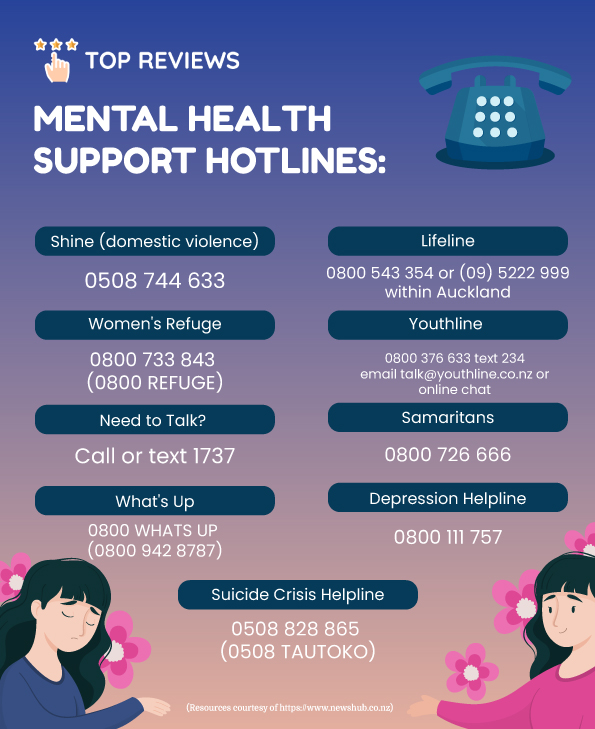
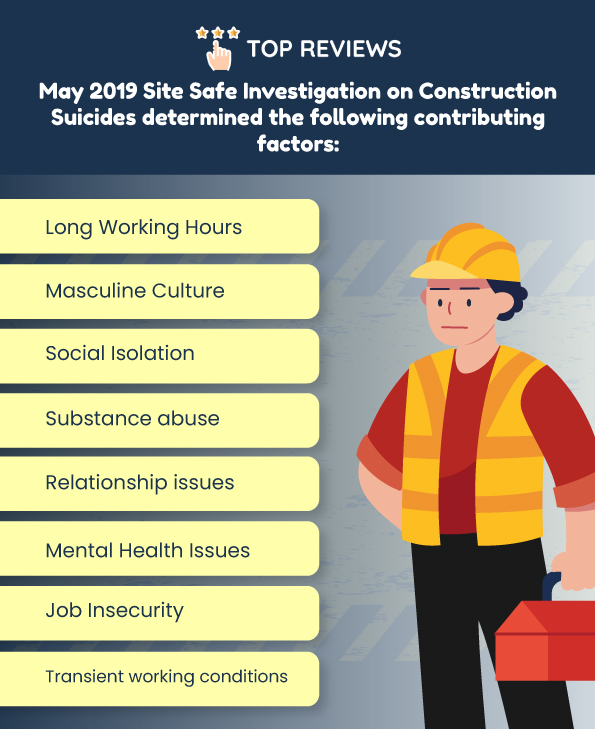
New Zealand’s Wellbeing Statistics (As Of Q2 2020)
Despite the presence of COVID-19, there was an overall high life satisfaction rating among New Zealanders by the second quarter of 2020.
As of June 2020, 85% of New Zealanders 18 years old and above gave a 7 out of 10 on the life satisfaction scale.
New Zealanders 65 years old and above often gave a “completely satisfied” overall life satisfaction rating, or a 10 out of 10. This is in contrast to people aged 18–24 years who admitted to feeling lonely most or all of the time (6.8 percent).
In the same quarter, 62% of men and just over half of women said they had not felt lonely at any time in the previous four weeks. Men and women also rated their overall life satisfaction equally, at 7.9 out of 10.
These satisfaction ratings may be better explained by the high trust New Zealanders have in each other, specifically to their public sectors and institutions. It’s illustrated by the following ratings taken in June 2020:
- 8.1 for trust in the police
- 7.4 for trust in the health system
- 6.6 for trust in parliament
- 5.0 for trust in the media
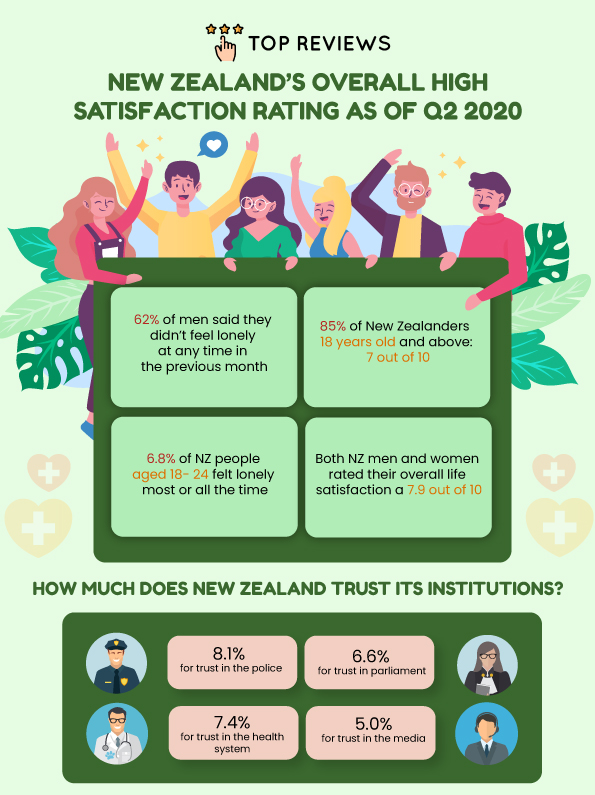
How Does New Zealand Rank in World Happiness During the Pandemic?
The UN Sustainable Development Solutions Network published the 2021 World Happiness Report, which ranked some 100 countries using the following “happiness” indices:
- Freedom
- Generosity
- Healthy life expectancy
- Income
- Social support
- Trust
New Zealand made it to number 9 of the top 10 spots in the list along with Finland, Denmark, Switzerland, Iceland, the Netherlands, Norway, Sweden, Luxembourg, and Austria.
Government statistics on well-being as of June 2020 declare that overall life satisfaction in New Zealand remains high. The report shows an average rating of 8.2 out of 10.
It’s also worth noting that those living in rural areas gave a generally higher life rating (8.4) than those living in urbanized areas (8.1).
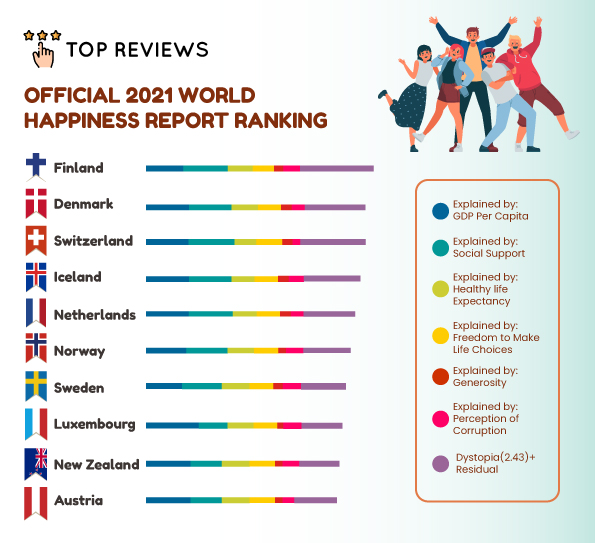
In sum, we can see that the country does have its challenges in safeguarding its people’s mental health, like most others. However, it has been making progress in addressing these problems.
The country’s wellbeing budget in particular is a novel initiative that may prove an effective step to address New Zealand’s depression, suicide, and mental health issues.
And the results speak for themselves thus far—the country consistently ranks in the UN Sustainable Development Solutions Network’s World Happiness Report. Peace of mind has become a priority in New Zealand, which bodes well for Kiwis’ future.
Notes:
https://www.stats.govt.nz/information-releases/wellbeing-statistics-june-2020-quarter
https://mentalhealth.inquiry.govt.nz/inquiry-report/he-ara-oranga/chapter-1-the-inquiry/1-4-context/
https://www.health.govt.nz/publication/tier-1-statistics-2019-20-new-zealand-health-survey
https://www.stuff.co.nz/world/300257572/new-report-ranks-worlds-happiest-countries-during-pandemic
https://www.health.govt.nz/publication/suicide-facts-data-tables-19962016
https://www.statista.com/statistics/995573/apac-happiness-ranking-score/
